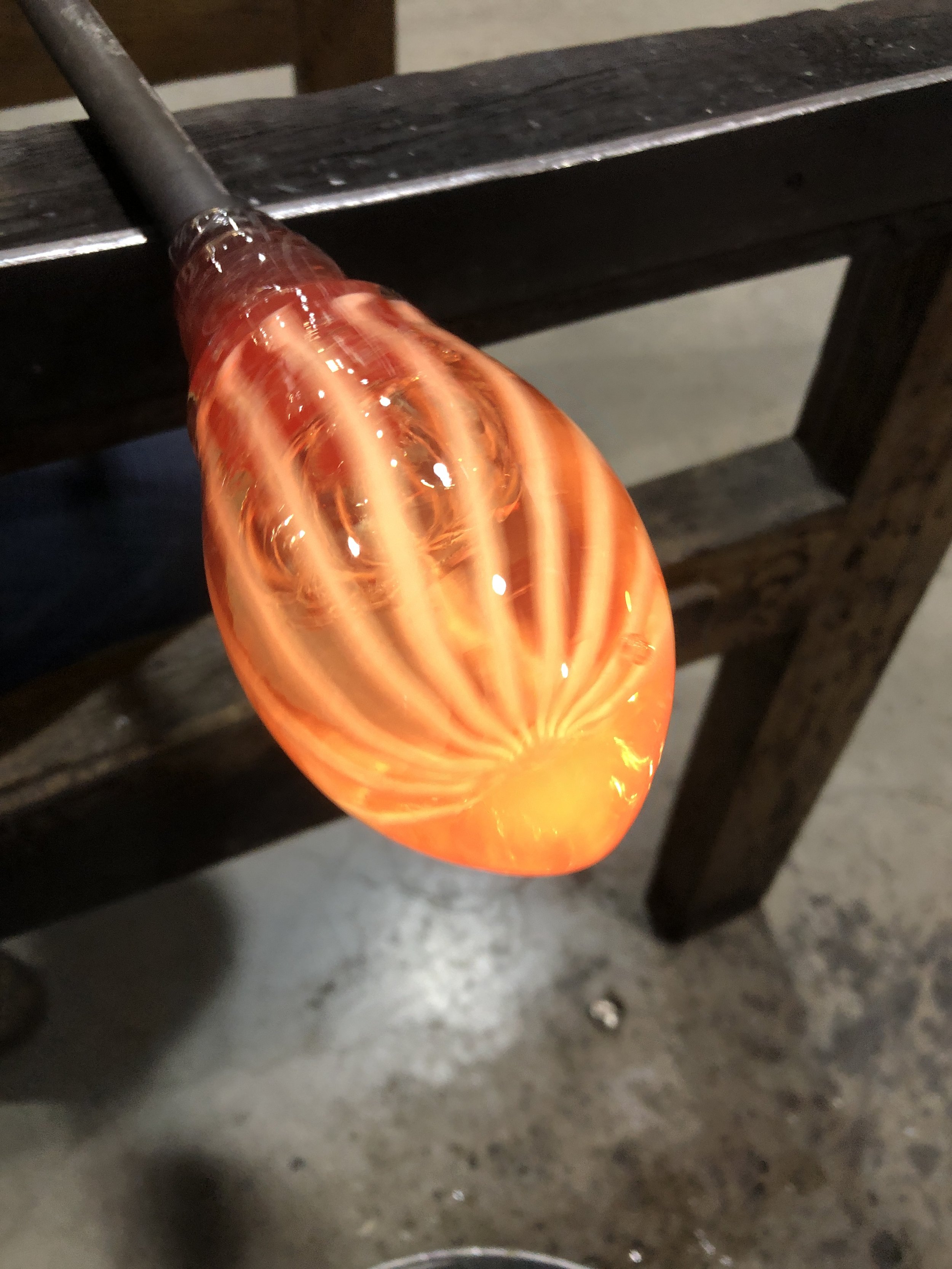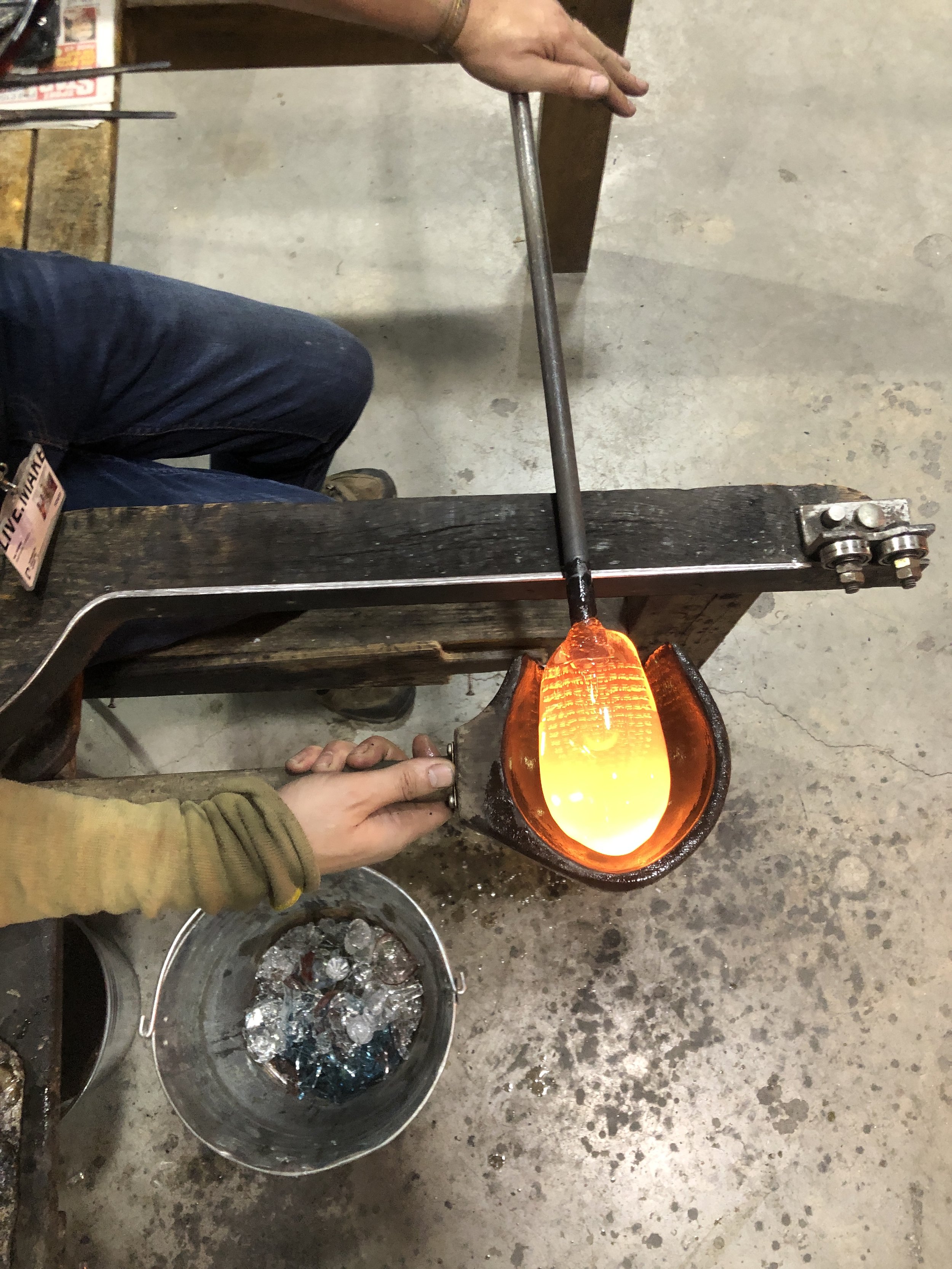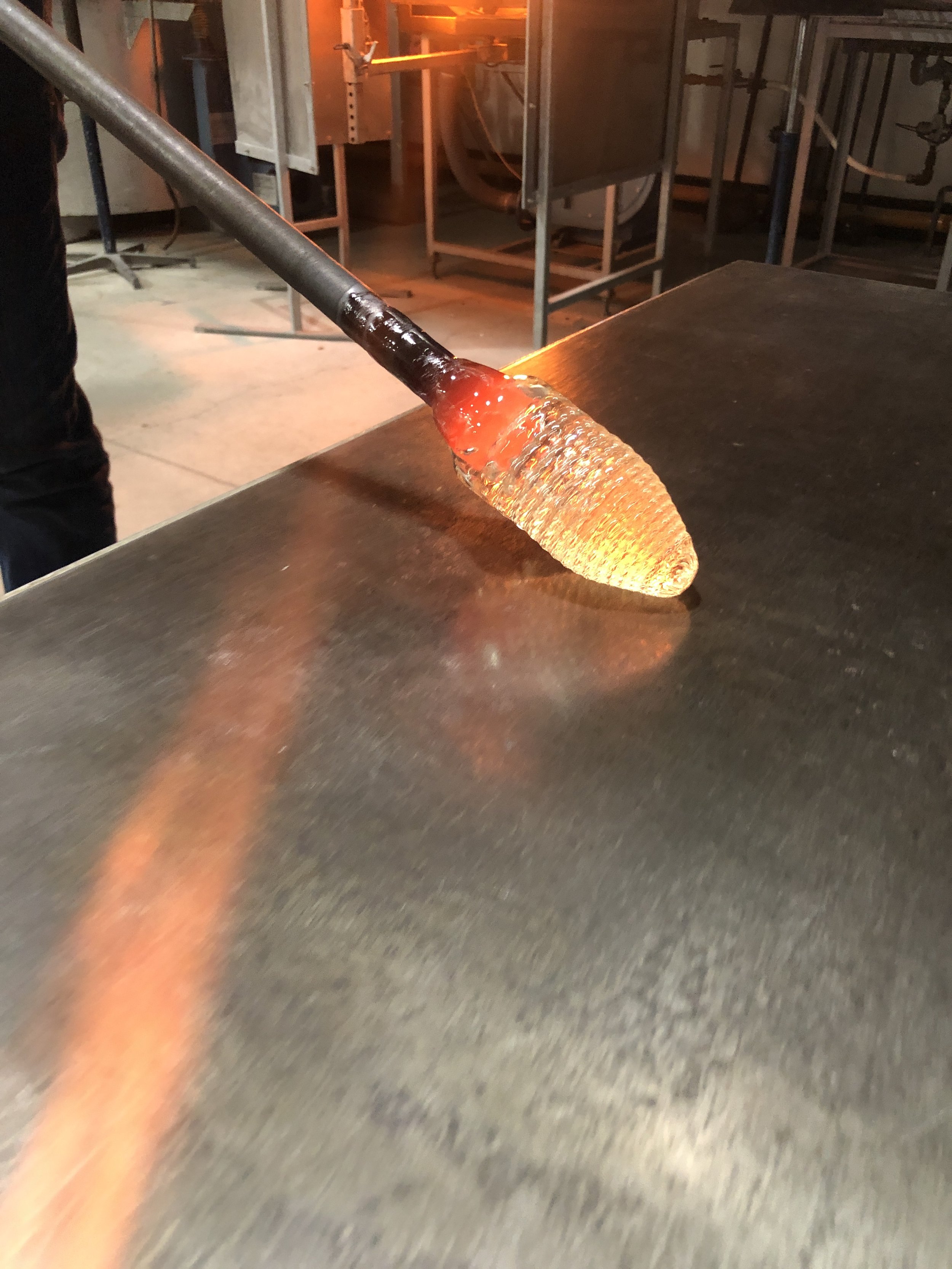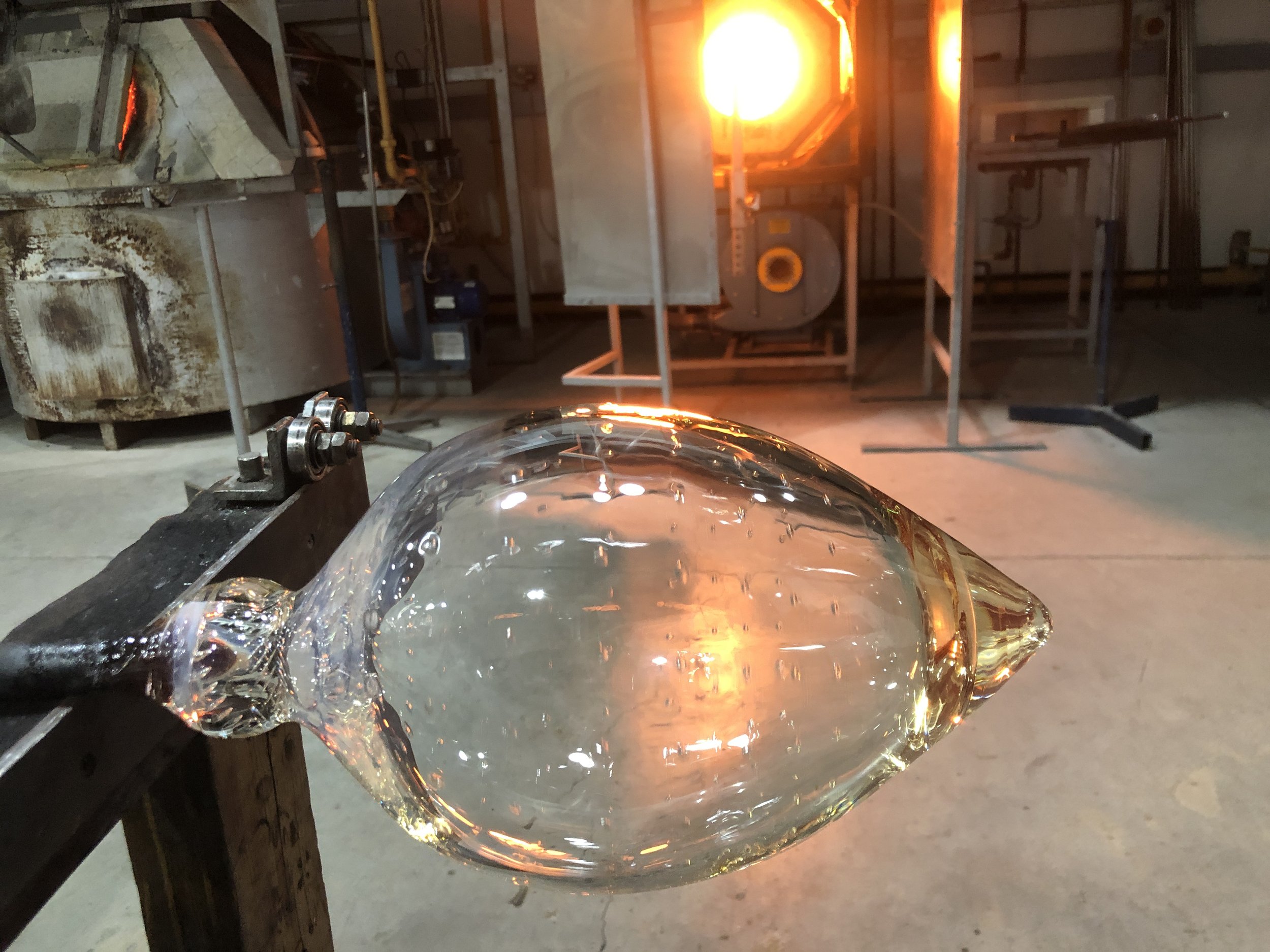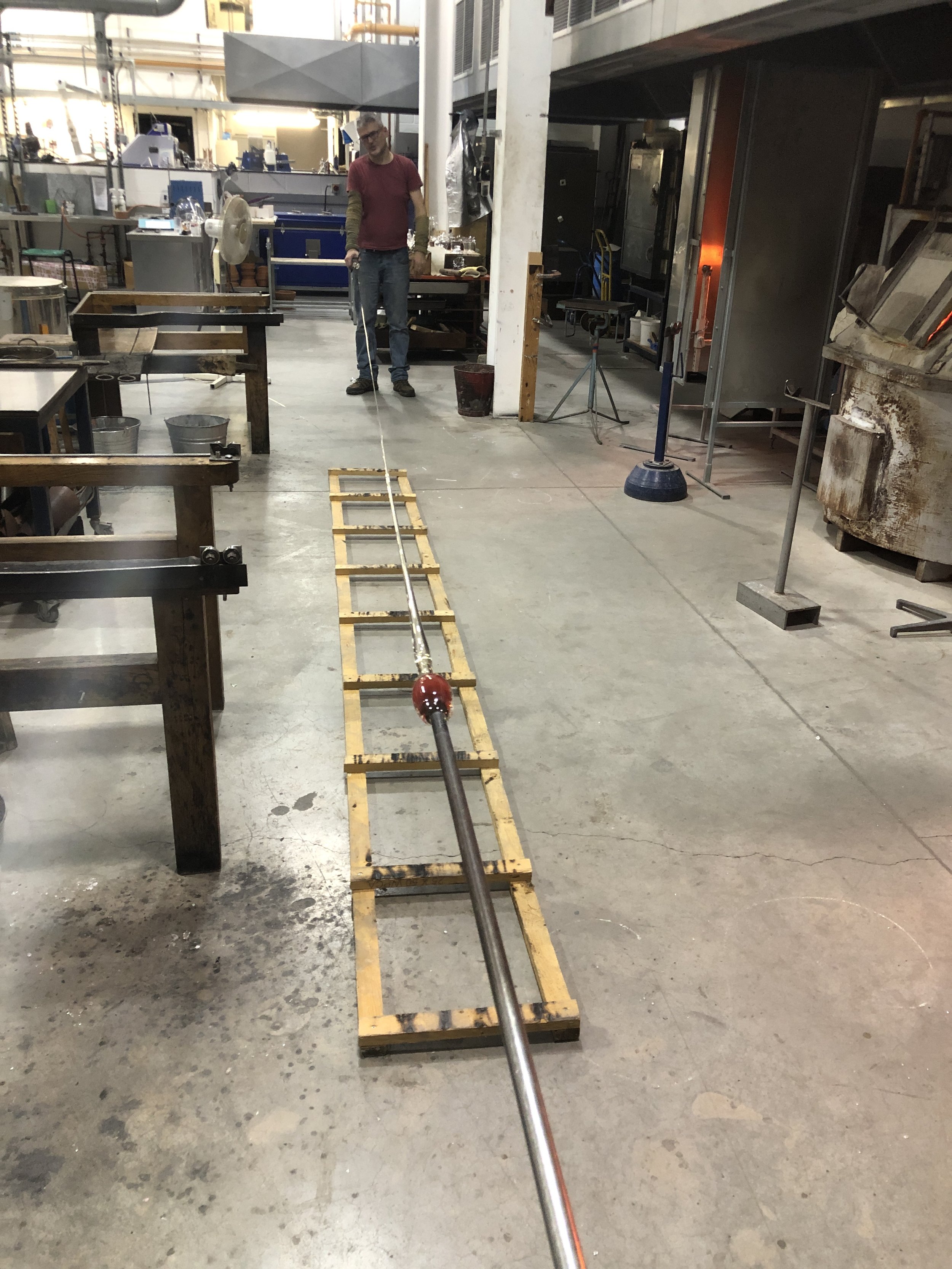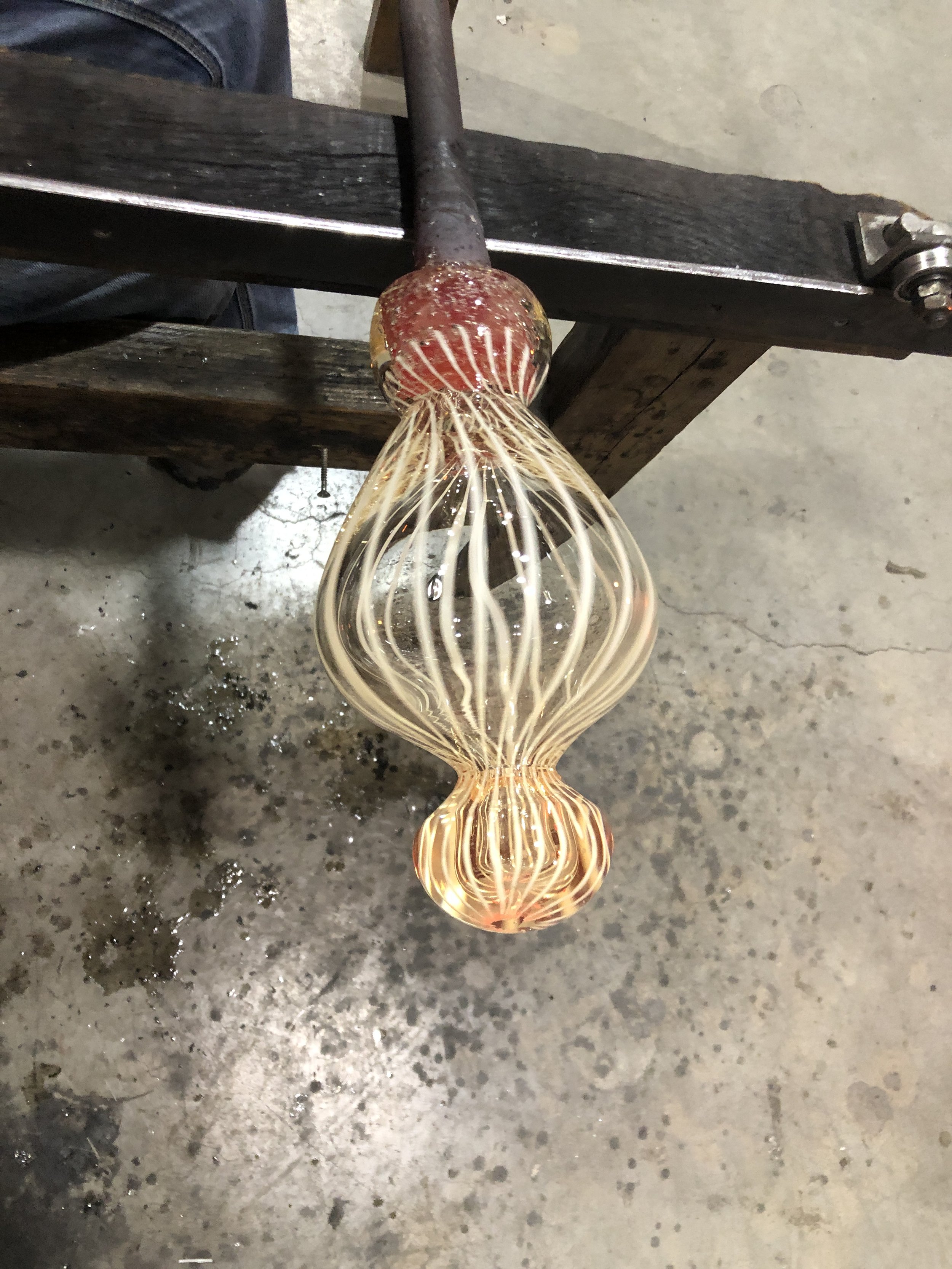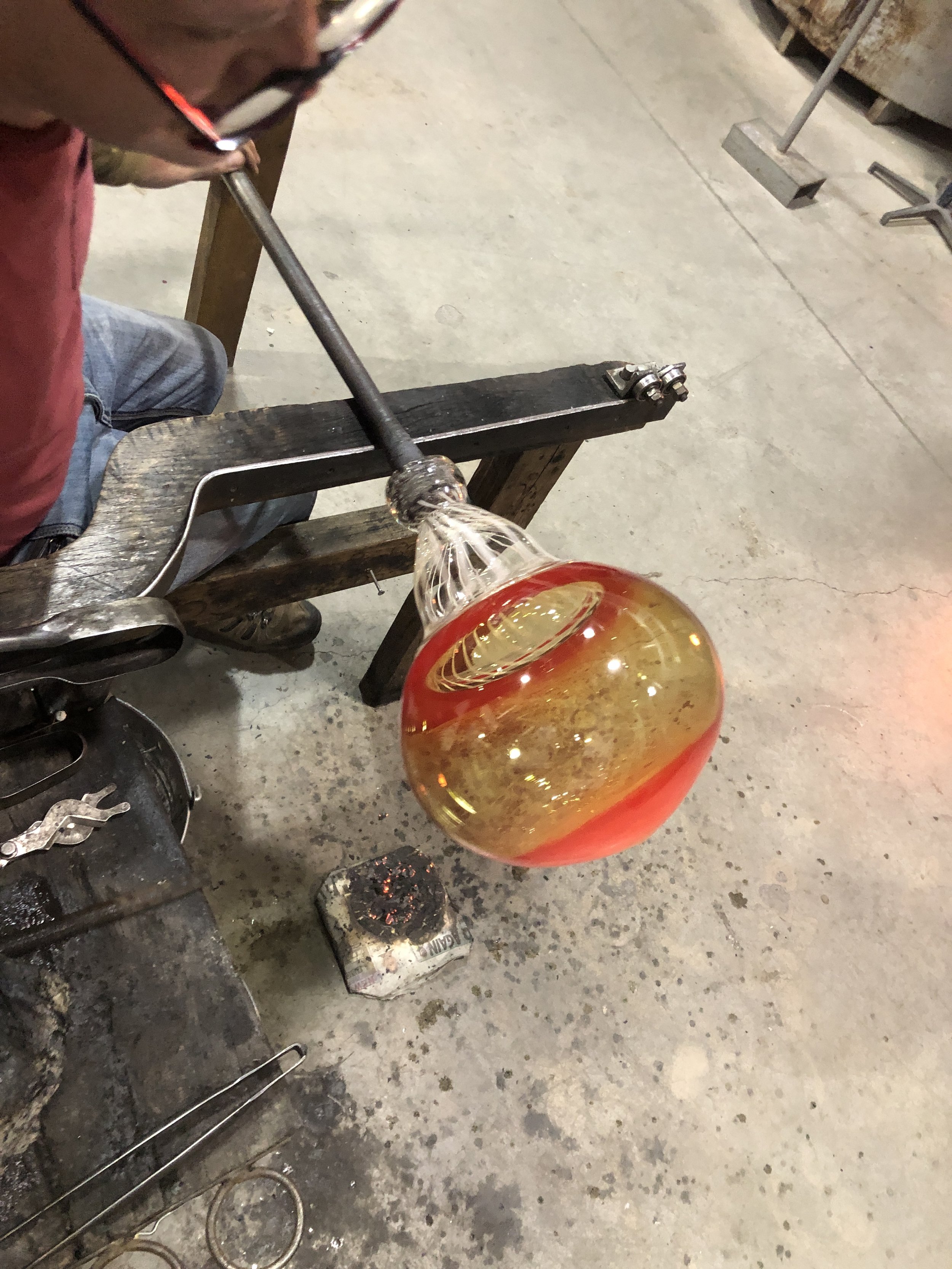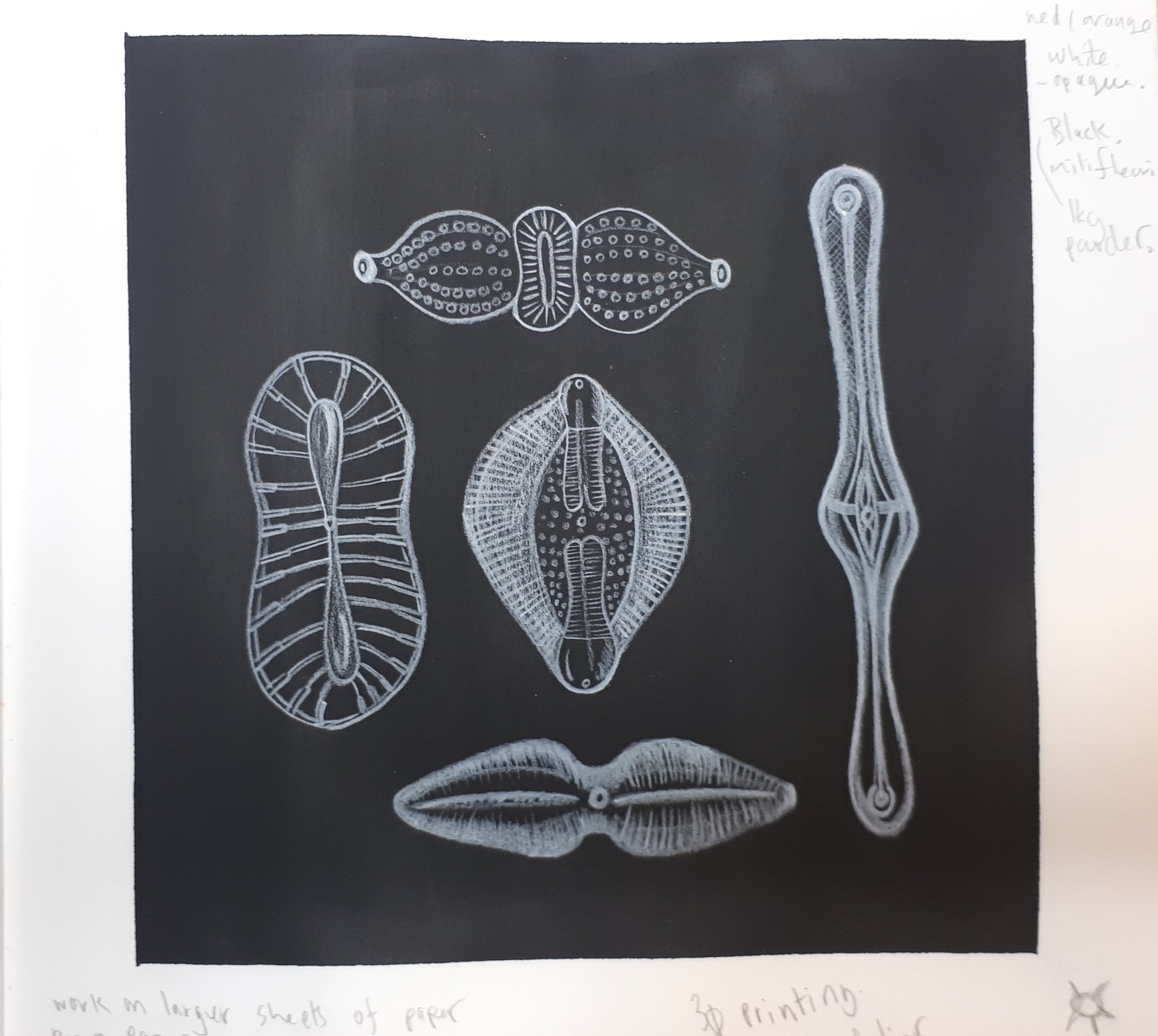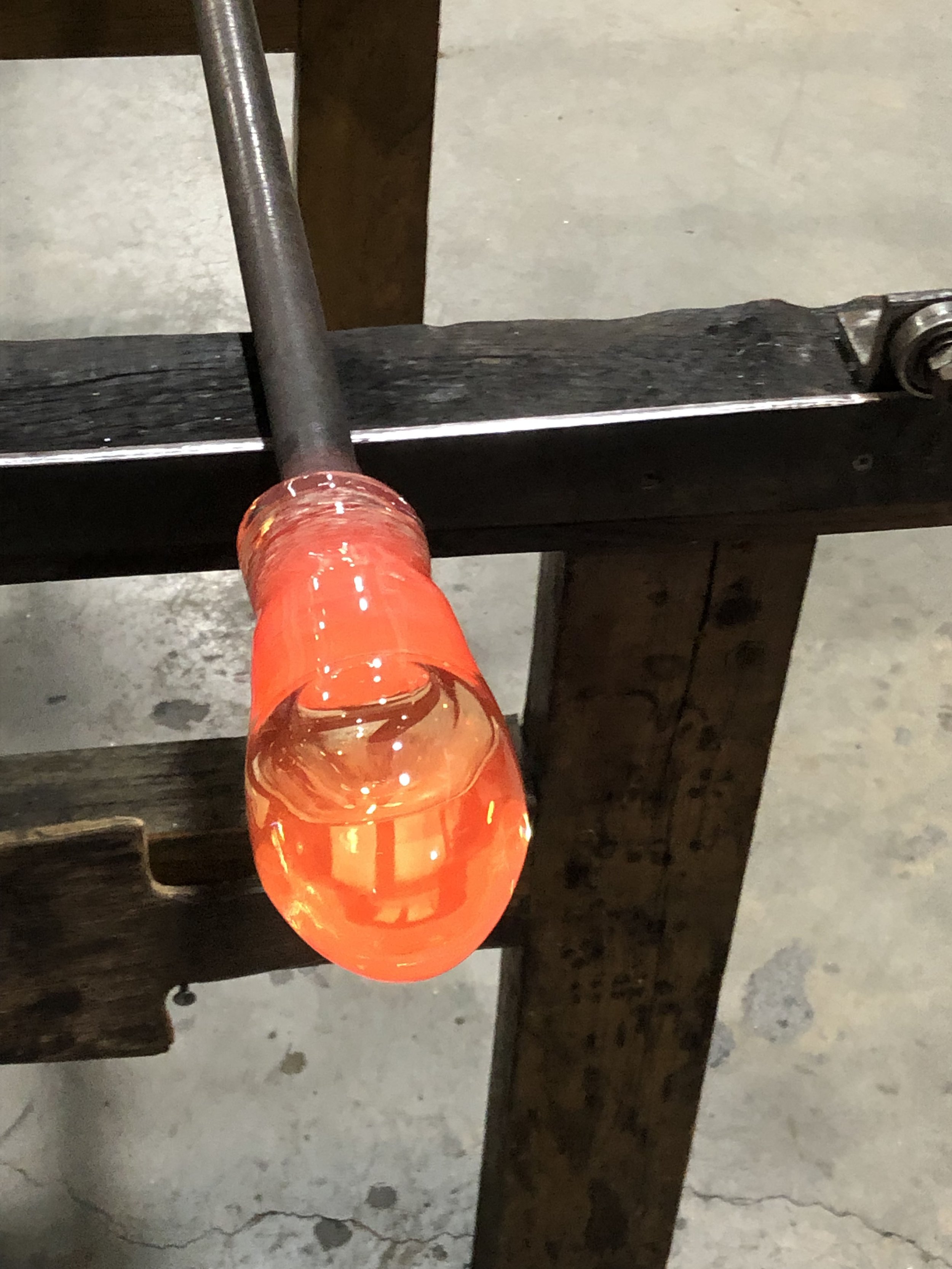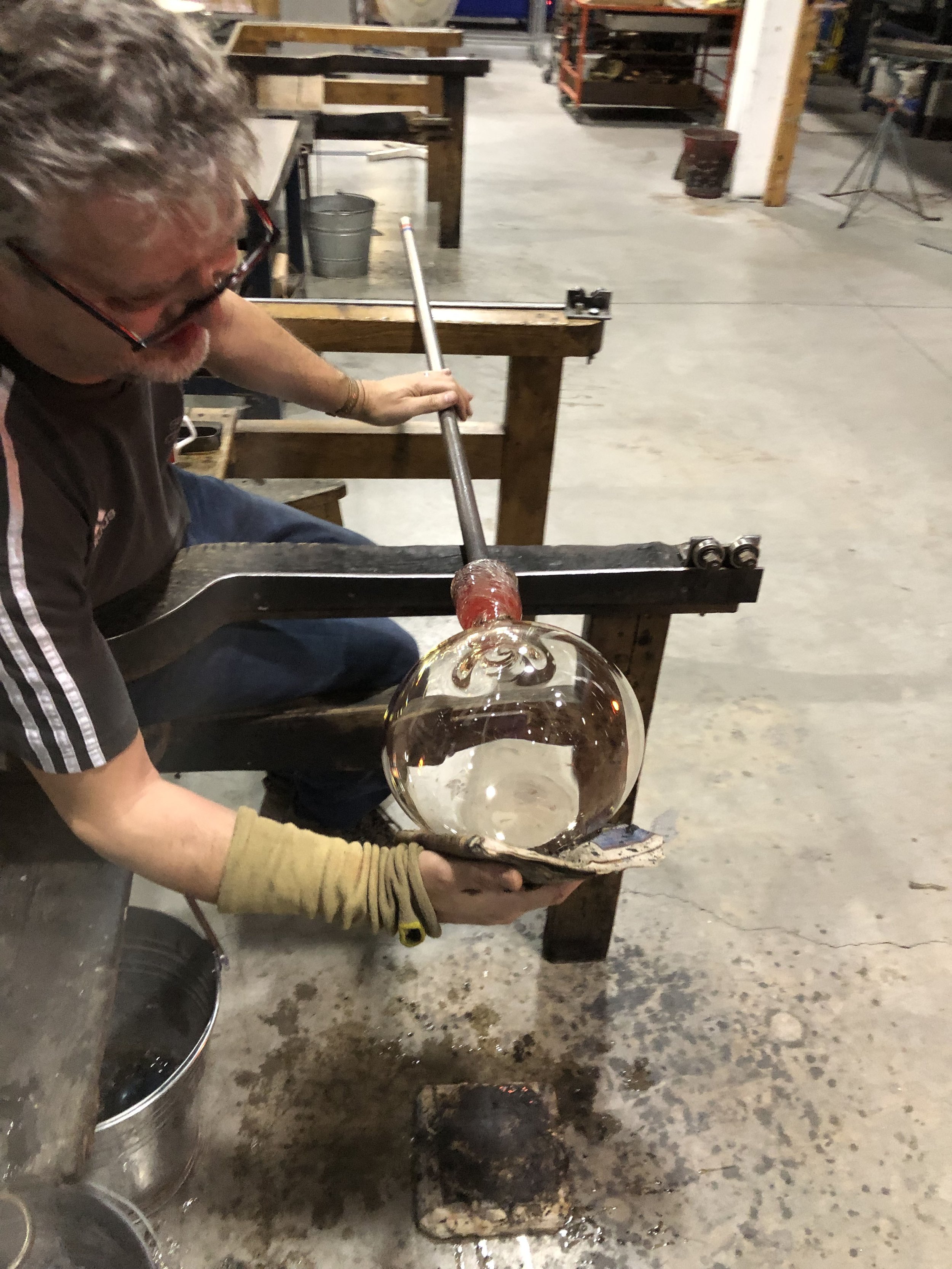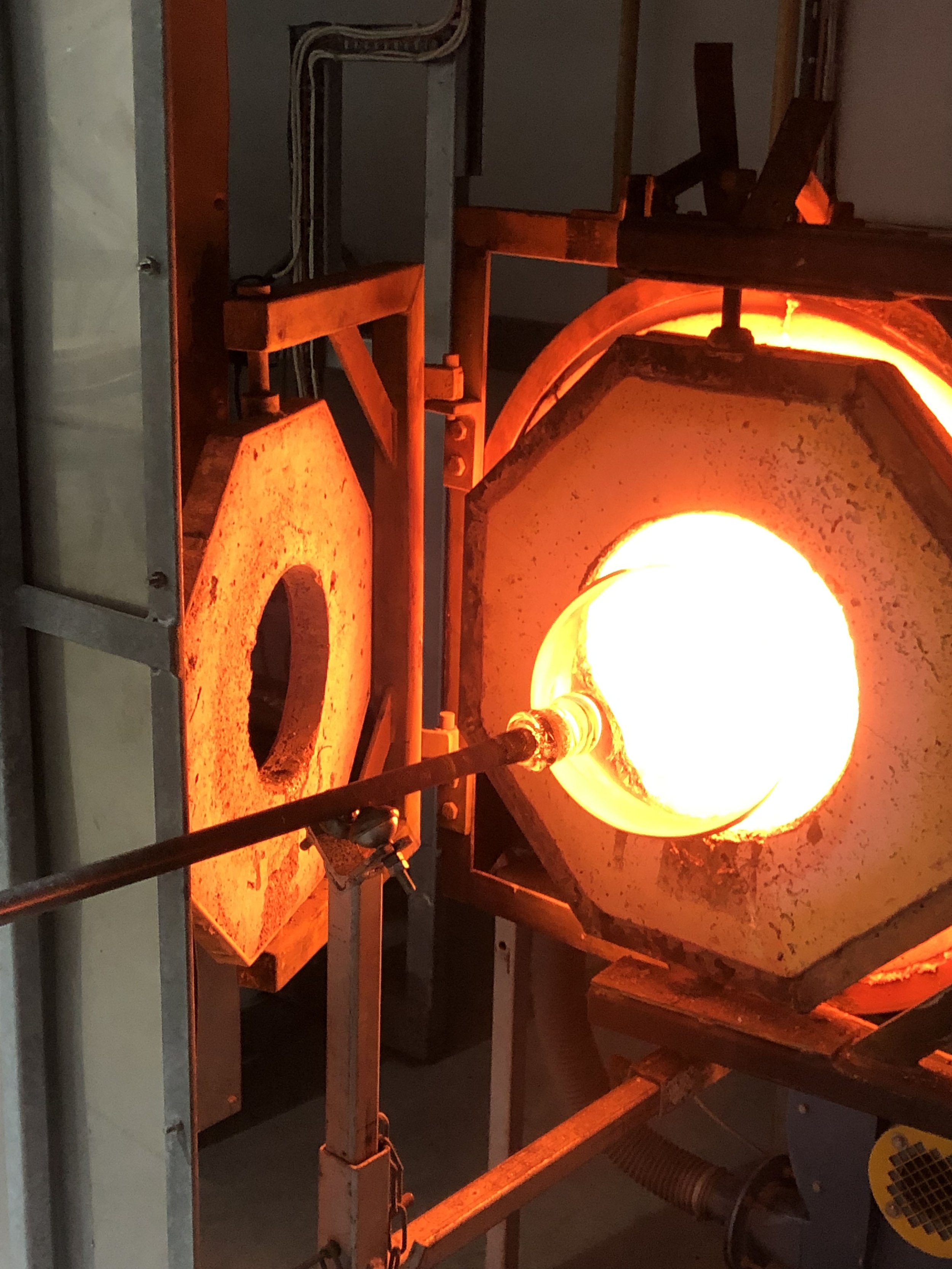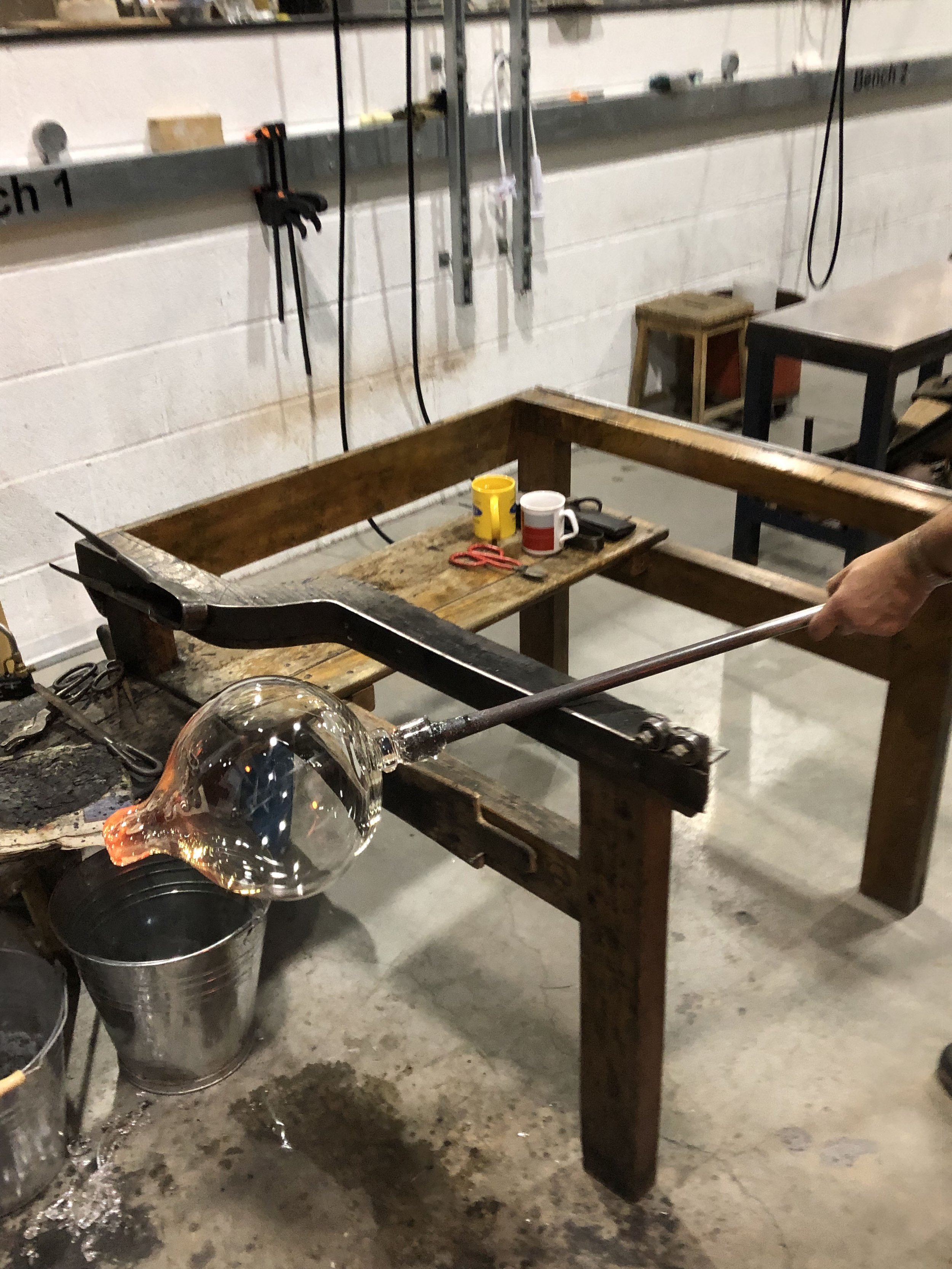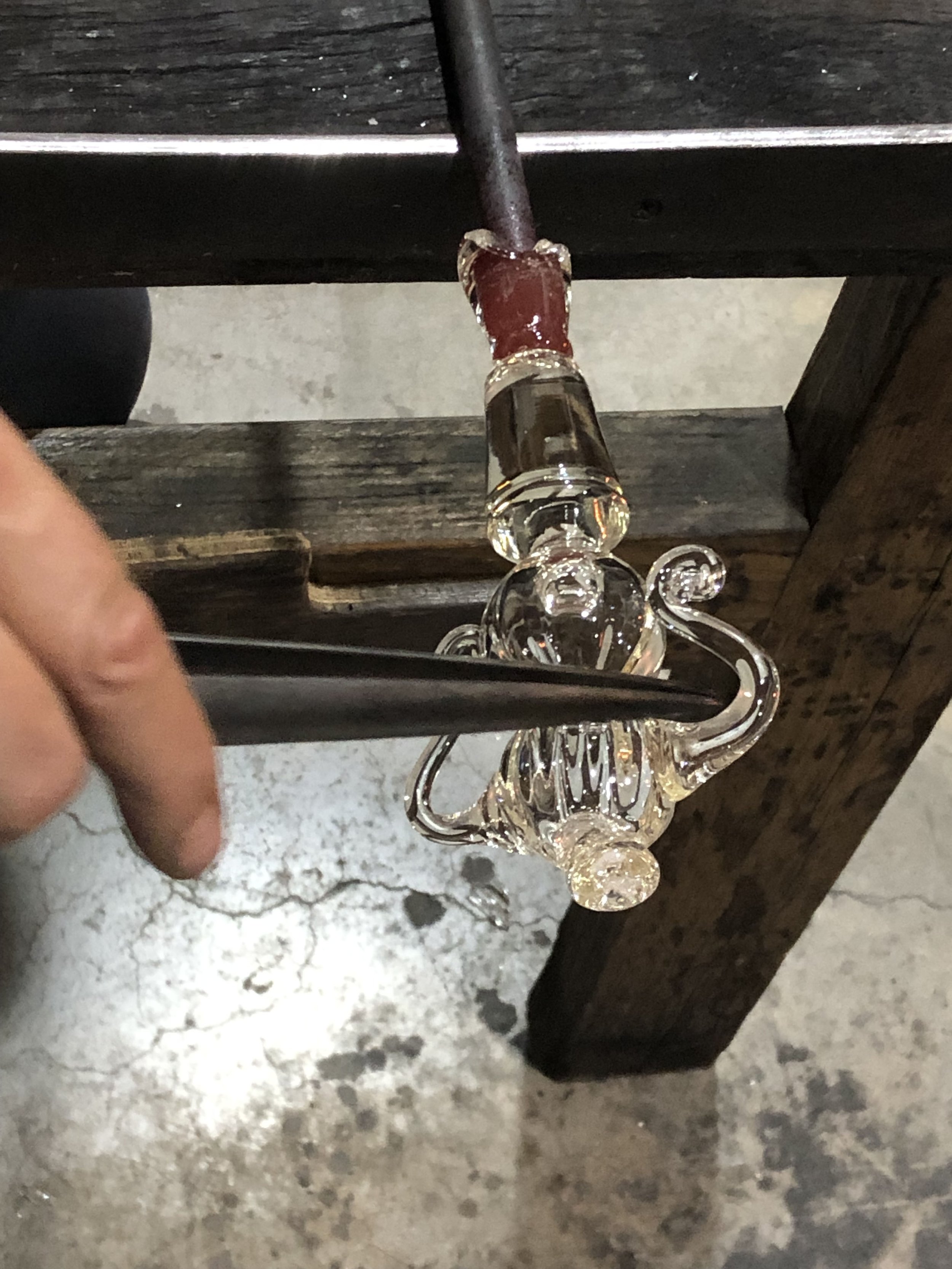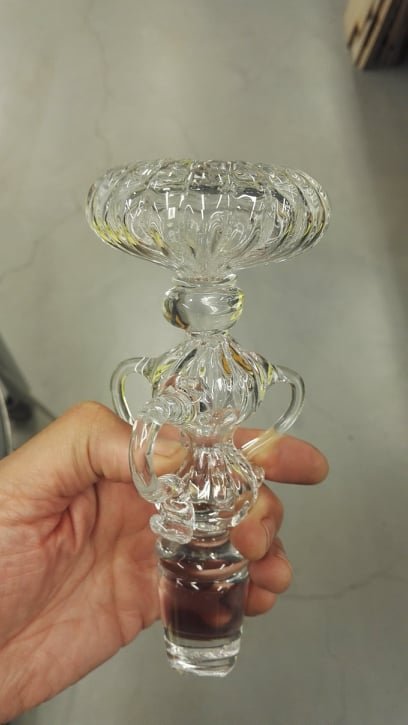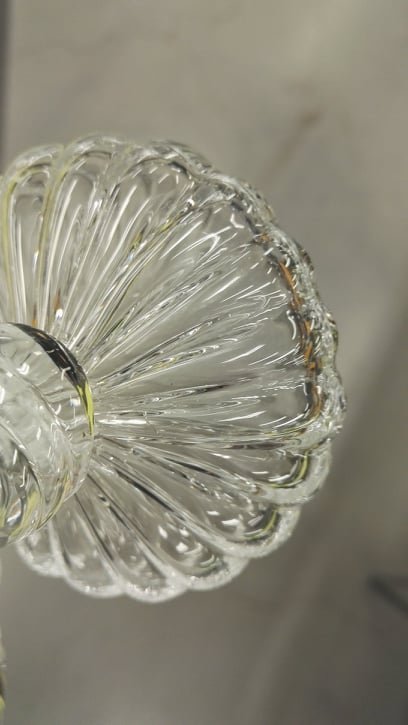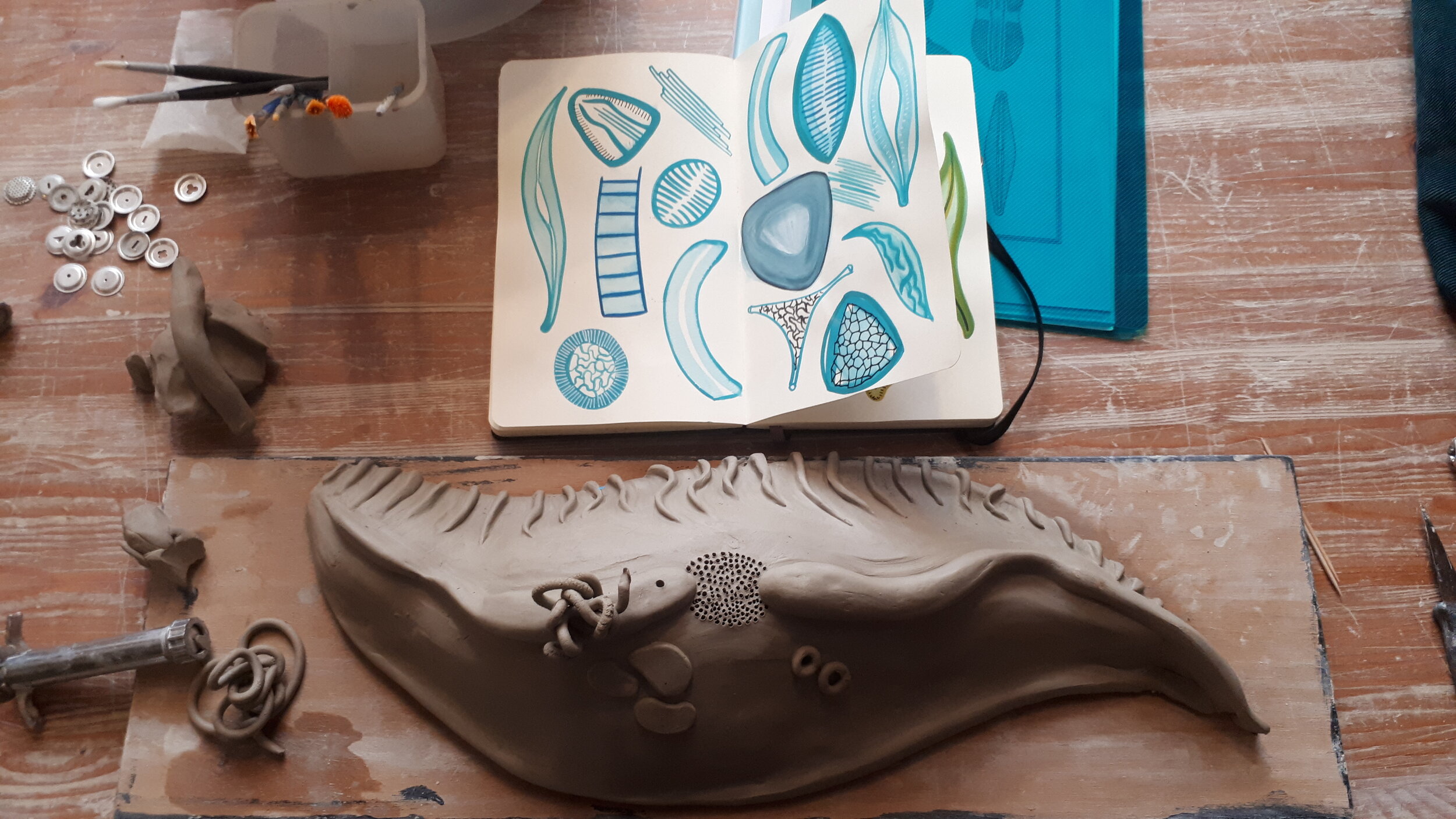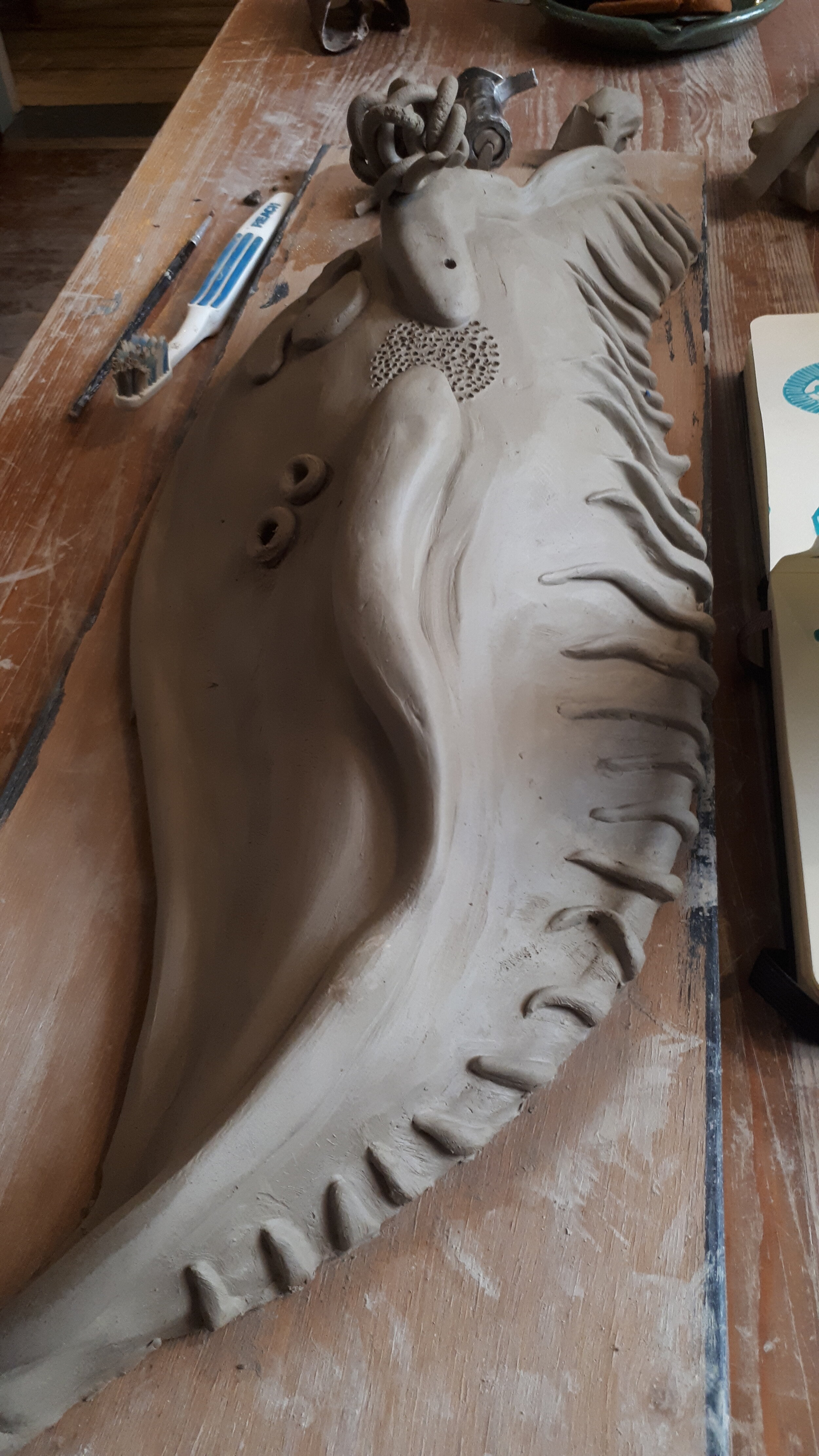I can see why Klaus Kemp became obsessed with the beauty of diatoms, each individual structure is so intricate and beautiful. After spending time drawing these structures, I felt that the perfect media to explore these forms would be glass. I can’t make glass, but I knew someone who could, that’s were master glassmaker Ian Hankey comes in.
We received a small R&D grant to begin some experiments, working together to see what we could achieve. Due to the lockdown during the Covid pandemic, Ian was unable to get access to the furnaces for the blown glass, so we began with etched glass and looked at possibilities of introducing solar strips into the glass to create energy. I really loved this idea and I went slightly off-tangent imagining etched glass panels in a greenhouse, which had solar strips and could generate enough electricity to heat the greenhouse over winter (that’s an idea to return to at a later date!)
Once Ian was able to get access to the furnace, he created some blown glass forms inspired by my diatom drawings. This is what I had imagined when I thought about the glass diatom forms, and I was excited to see where this body of work could take us if we had the time to play and develop the work.
I applied for the DYCP funding through Arts Council England, and was overwhelmed to find out that my application had been successful. This meant that I would be able to collaborate with Ian and share our ideas and skills. We can become more ambitious, investigative and take creative risks during this 9 month development time.
We particularly want to develop the glass ‘diatom’ forms, pushing the concept of weighted glass to see how it affects the balance & stability of each piece in water. We will experiment with colour, transparencies, form & texture to further develop the aesthetics of the glass.
I’m excited to see where this collaboration will take us, and this blog will document our progress.
Further notes on diatoms
Diatoms turn energy from the sun into sugar
Diatoms have light-absorbing molecules (chlorophylls a and c) that collect energy from the sun and turn it into chemical energy through photosynthesis.
Diatoms produce 50% of the air we breathe
Through carbon fixation, diatoms remove carbon dioxide (CO2) from the atmosphere. The CO2 is converted to organic carbon in the form of sugar, and oxygen (O2) is released. We breathe the oxygen that diatoms release.
Diatoms feed the oceans, lakes and rivers
Diatoms produce long-chain fatty acids. Diatoms are an important source of these energy rich molecules that are food for the entire food web, from zooplankton to aquatic insects to fish to whales.
Diatoms are the most diverse protists on earth
Diatoms are eukaryotes, one of the Heterokont algae. Estimates of the number of diatom species range from 20,000 - 2 million. Scientists are discovering new species every year.
Diatoms tell us about the health of aquatic systems
Diatoms are particular about the quality of water in which they live. For example, species have distinct ranges of pH and salinity where they will grow. Diatoms also have ranges and tolerances for other environmental variables, including nutrient concentration, suspended sediment, flow regime, elevation, and for different types of human disturbance. As a result, diatoms are vital for assessment and monitoring biotic condition of waters.





































